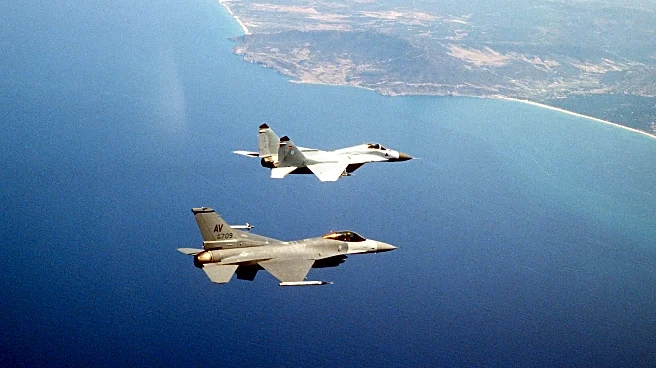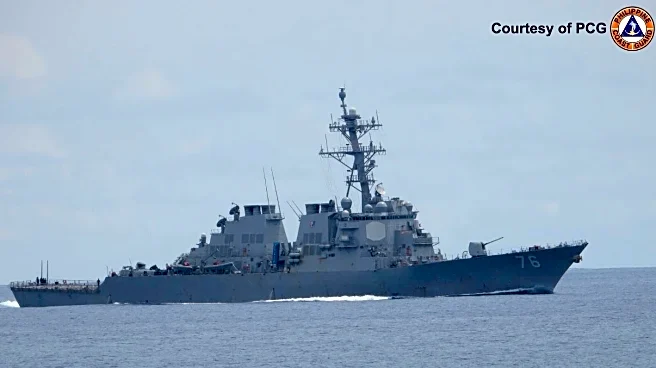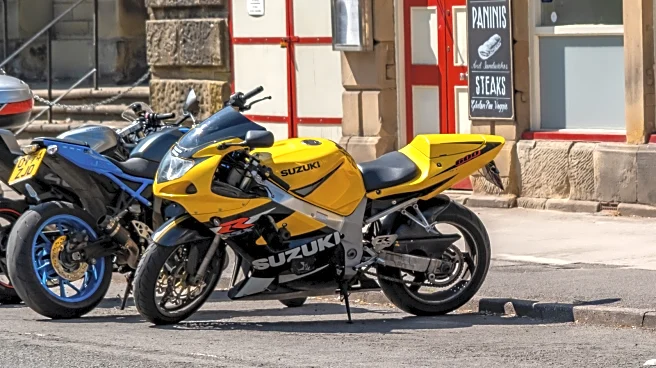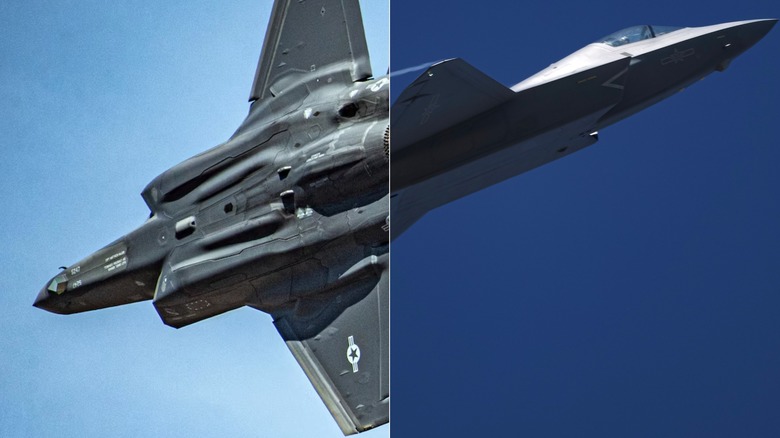
The fifth generation of fighter jets was developed and deployed in the 21st century and is still going strong, and new planes are still in the works. That includes China's Shenyang J-35 fighter jet (and its land-based variant, the J-35A), which was just unveiled late last year. Considering China's chief economic and political rival is the United States, it's only natural that people immediately began comparing the J-35 to America's own 5th-generation fighter — the F-35 Lightning II.
The F-35 is named
after a literal force of nature — lightning — and, from a design and technological standpoint, is far from the original World War II-era P-38 Lightning. The U.S. Air Force calls the Lightning II "the world's most advanced multi-role fighter," so China's J-35 has a lot to live up to if it's to be directly compared to the F-35. Thankfully, no conflict thus far has warranted combat between the two aircraft (though China may use mock F-35s for tests and training). The best way to compare the Navy's best fighter jet to China's is by looking at specs and other known features.
The F-35 is 51.4 feet long and 14.4 feet tall, with a wingspan of 35 feet. The wings themselves take up 460 square feet, while its horizontal tail span is 22.5 feet. When empty, the jet weighs 29,300 pounds, though it can carry 18,250 lbs of fuel. Less is known about the J-35 since it's still classified, but there are estimates based on observations of the aircraft. The J-35A, which is designed for land-based takeoffs, is believed to be around 56.75 feet long and 15.75 feet tall, with a 37.7-foot wingspan. Based on these measurements, the J-35 is a bit larger than the F-35.
Read more: 10 Airplanes That Managed To Fly With Staggeringly Low Horsepower
Is The J-35 Faster Than The F-35?
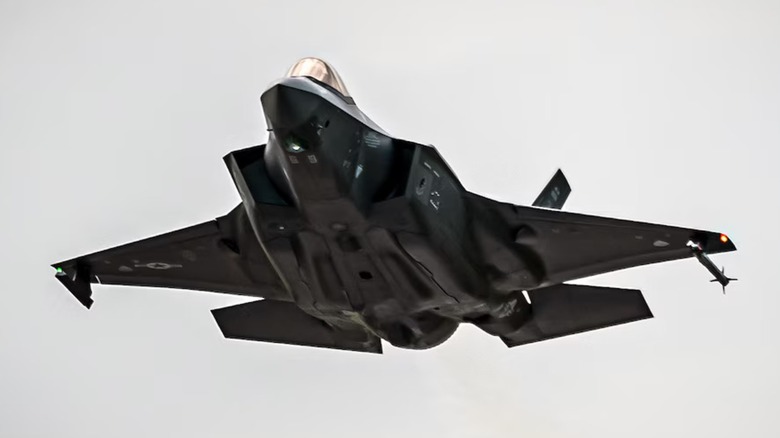
When fully loaded, the F-35 has a top speed of Mach 1.6, which equates to 1,200 miles per hour — earning its Lightning II moniker. The jet has a climb rate of 45,000 feet per minute and can pull up to 9 G's. Its range is more than 1,200 nautical miles, which is a little shorter than the J-35. The J-35's combat radius is estimated to be between 650-810 nautical miles, which is the furthest distance the fighter can reach before having to return to base and refuel. That means its max range could theoretically be 1,620 nautical miles — significantly further than the F-35. The J-35 is also estimated to be faster than the Lightning II with a top speed of Mach 1.8 — a difference of 170 mph.
It shouldn't be a surprise that the speeds of the two fighters are not identical, as they have very different engine configurations. The F-35 flies with a Pratt & Whitney F135, an afterburning turbofan developed specifically for the jet, equipping it with over 40,000 lbs. of thrust. The J-35A, on the other hand, has previously used not one but two WS-13 engines, though it's been upgraded with twin WS-19 Huangshan engines. The WS-19s are built with omnidirectional thrust vectoring technology and can produce over 10 tons of thrust.
The USAF Prioritizes Stealth, But China May Be More Interested In Dogfight-Friendly Maneuverability
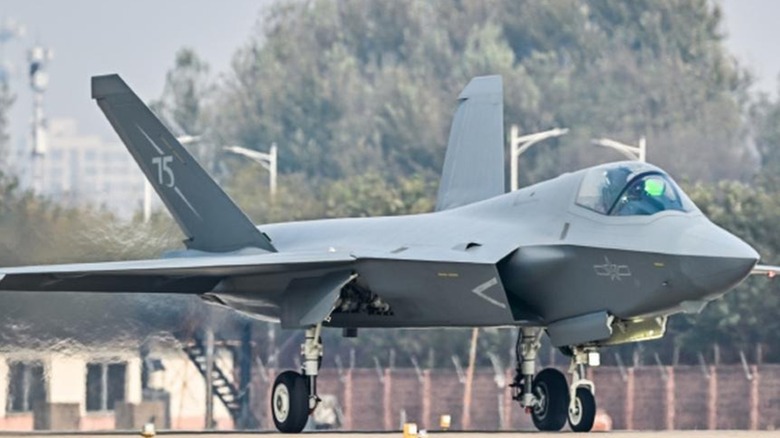
Notably, the designs of both fighter jets prioritize stealth, reflecting the importance of surveillance and intelligence in modern warfare. The aerodynamic profiles of both planes are stealth-forward and have a V-like shape, which don't just better deflect radar but also reduce turbulence. However, the J-35A has wider stabilizers less sharply angled than the F-35, so it's possible that China's military strategies and objectives may prioritize agility more than the F-35 does.
Also supporting this possibility is the wing design of both aircraft, with the J-35's more angular wings boosting maneuverability and the F-35's smoother and more contoured wings designed to reduce radar reflection and turbulence at high speeds. This allows the fighter to hide and last longer over enemy territory. Also aiding stealth capabilities are the internal munition bays used by both aircraft that keep weapons' signature off radar. Both fighter jets can also carry weapons externally, though. The F-35 has a payload of 18,000 pounds and can utilize a variety of different armaments catered to specific missions, including AIM-120C AMRAAM and AIM-9X Block II air-to-air missiles and JDAM bombs, among other munitions.
For the J-35 and other Chinese planes, it's believed that next-generation air-to-air and air-to-surface weapons are being developed, including a folding-tail variant of the PL-15E. The J-35 could feasibly carry six of these more compact missiles internally. Currently, at least 19 nations fly the F-35, including the U.S. and its allies. As the J-35 is a newer plane, China has not sold or shared it with any other military as of yet. But — no matter where they're taking off or what skies they're patrolling — both fifth-generation jets can claim to be among the most advanced fighters ever made.
Want the latest in tech and auto trends? Subscribe to our free newsletter for the latest headlines, expert guides, and how-to tips, one email at a time.
Read the original article on SlashGear.
